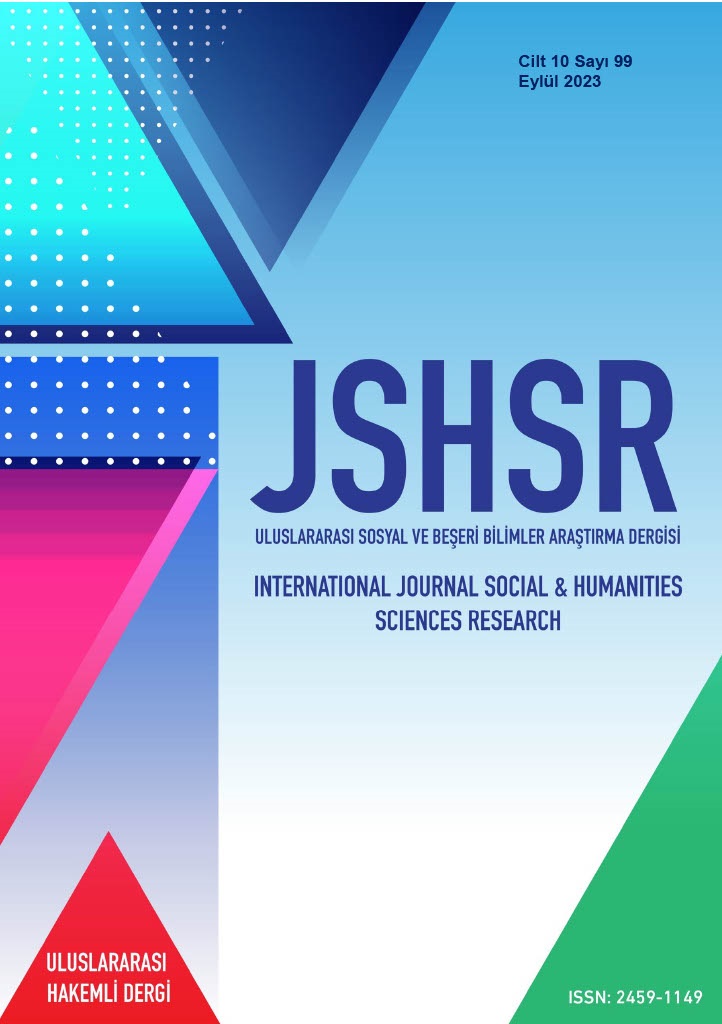Interpersonal Communication and Interpersonal Communication and Social Exchange Theory
DOI:
https://doi.org/10.5281/zenodo.8396654Keywords:
Interpersonal communication, effective communication, social exchange theoryAbstract
Communication is an indispensable part of human life. We communicate for many reasons such as maintaining our existence, meeting our material and spiritual needs, exchanging information expressing our feelings and thoughts. Communication is one of the most important tools at the center of human life. Therefore, establishing accurate and effective communication is vital for each person to meet their individual needs. Correct and effective communication is a process in which thoughtful, planned, conscious, consistent behavior and words are brought together and transferred to the other party. From this point of view, it can be said that communication, like an art, is a subtle, sensitive and human product that can contain many meanings. The social exchange theory that we discussed in the study is a theory that assumes that our purpose in communicating is to gain interest from the other party. This theory bases communication on the principle of reciprocity and assumes that communication is strong and effective according to the rate of benefit to be obtained from the person being contacted. In social exchange theory, communication is an exchange with rewards and costs. People choose the person to communicate with in line with their personal needs and establish better communication with other people in direct proportion to meeting their needs. In the study, subjects such as communication as an art, effective communication and reasons for communicating in the context of social interaction theory were discussed. The study was carried out with the document analysis technique, one of the qualitative research methods.
References
Baldwin, D. (1998). Power and Social Exchange. The American Political Science Review.
Beebe, Steven A, Beebe, Susan J, Redmond, Mark V, Geernick, Terri M. (2014) Interpersonal Communication: Relating to Others (7th) Canada: Pearson Education Canada
Blau, P. M. (1964). Exchange and power in social life. New York: Wiley
Davis, J. B. (2008). Social Exchange Theory. In W. A. Darity Jr. (Ed.), International Encyclopedia of the Social Sciences (second edition) (2nd ed.), Vol. 9 volumes, pp.
DeVito, J. (2016). The interpersonal communication book. Harlow, Essex: Pearson Education.
Hartley, P. (1993). Interpersonal Communication. London: Routledge.
Hogg, M., & Vaughan, G. (2014). Social Psychology (7th ed.). Pearson.
Mulkay, M. (2014). Functionalism, exchange and theoretical strategy (RLE social theory). London: Routledge.
Ören, Ş. (2015). Sanatın Doğuşunda İletişimle Aralarındaki Varoluşsal Birliktelik ve Sanat Eyleminde Psikolojik İletişimin Önemi. Atatürk İletişim Dergisi, (8) , 207-226.
Poyraz, E. (2020). Interpersonal Communication And Social Exchange Theory. International Journal of Social and Economic Sciences, 10(1), 1–14. https://ijses.org/index.php/ijses/article/view/265
Schwartz, B. (1980). New developments in operant conditioning and their implications. In K. J. Gergen, M. S. Greenberg and R.H.Willis (eds), Social Exchange: Advances in Theory And Research. New York: Plenum
Solomon, D. & Theiss, W. (2013) Interpersonal Communication: Putting theory into practice. Hove, UK, Routledge.
Spitzberg, B. H., & Cupach, W. R. (2002). Interpersonal skills. In M. L. Knapp & J. A. Daly (Eds). Handbook of interpersonal communication (3rd ed., pp. 564–611). Thousand Oaks, CA: Sage.
Wood, J. (2010). Interpersonal Communication: Everyday Encounters. USA, Wadsworth Cengage Learning.
Wolff, E. N. (2008). Rate of Surplus Value. In W. A. Darity Jr. (Ed.), International Encyclopedia of the Social Sciences (second edition) Vol. 9.
Downloads
Published
How to Cite
Issue
Section
License
Copyright (c) 2023 INTERNATIONAL JOURNAL OF SOCIAL HUMANITIES SCIENCES RESEARCH

This work is licensed under a Creative Commons Attribution 4.0 International License.


